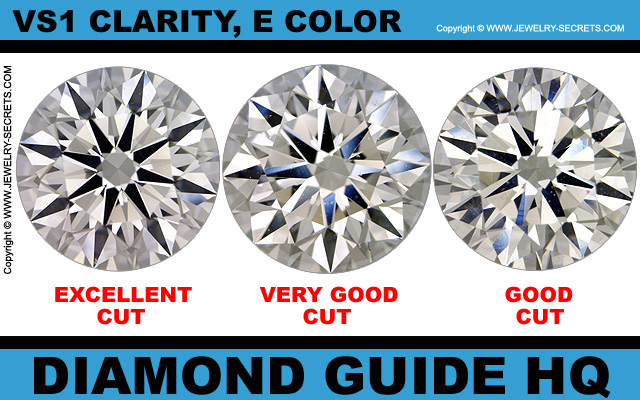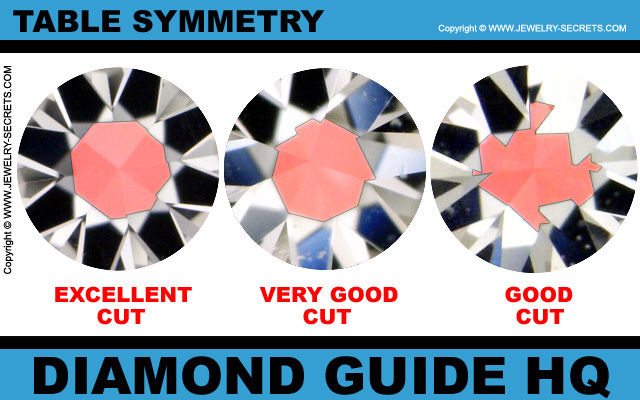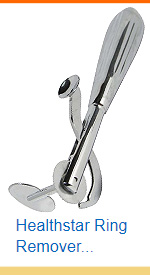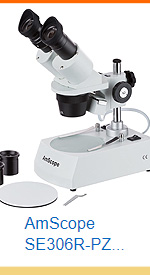COMPARE GIA CUT GRADES
SEE GIA'S DIFFERENT CUT GRADES
This post contains affiliate links. If you use these links to buy something I may earn a commission. Thanks! As an Amazon Associate I also earn from qualifying purchases.

GIA grades Diamonds with 5 different Cut Grades: Excellent, Very Good, Good, Fair and Poor.
The question is: Can you tell the difference between these visually?
My Answer: YES!
To prove this, I’m going to show you Diamonds of the exact same Clarity, Color and Certification… all without Fluorescence.
The only real differences between these Diamonds will be the Cut Grade.
To make things fun, I’m going to use my favorite Clarity and Color combo: VS1 Clarity, E Color!
I’m only going to show you the top 3 grades: Excellent, Very Good and Good. This is because most people would never choose to buy a Diamond with a Fair or Poor Cut, plus most GIA Certified Diamonds are generally Cut better, and lastly, because James Allen (who these images are taken from), doesn’t sell Lower Quality Cuts (good for them)… as with most other reputable Jewelers and Jewelry Stores!
So let’s begin…
Excellent Cut Grade:
Take a look at a Diamond 10x Magnified with an Excellent Cut. It’s breathtaking!
Notice how crisp and clean the Symmetry is. The facets line up almost perfectly. You can clearly see that wonderful Arrows (of Hearts and Arrows – Hearts will be shown from flipping the Diamond over and viewing it from the Culet up) shape presented in the stone.
Excellent Cut Diamonds always make the Diamond Sparkle like crazy, even if the Clarity is lower.
Very Good Cut Grade:
Next up, we look at a Diamond (GIA Certified), with a Cut Grade of Very Good.
Notice how you can still see a good portion of the Arrows in the Symmetry of the stone. They are not as present or as perfect in a stone Cut like this. Still, a Very Good Cut will give you Very Good Brilliance, Sparkle and Fire.
I recommend purchasing Cuts of Excellent or Very Good!
Good Cut Grade:
This is where you’ll start to see more disorder when it comes to Cut. Good Cuts are just good. Not great, not poor. They are a decent Diamond, but will lack some of the Sparkle and Pizzazz that great Diamonds are known for. This is apparent when you view the Diamond under a Microscope.
As you can see, the Arrows are all over the place. The Symmetry is shifted and the Facets don’t really line up. This throws light off. It makes it harder for bright light to bounce across and come back out when the Angles, Proportions and Percentages are not right.
Cut does make all the difference in the world when it comes to the Beauty in a stone. Pay close attention to Cut and you’ll get yourself an awesome Diamond!
Compare Cuts Side by Side
Now let’s compare these 3 Diamonds side by side so you can see their differences better…

See how it’s much more obvious now? You can visibly see the Diamond Symmetry falling apart as you go down the scale…
I’ll highlight the Arrows again so you can see what I’m talking about…

Fascinating, eh? I love looking at Diamonds. Love talking about them. Love showing them. When you see things like this it really opens your eyes. It’s that “Ah-ha” moment that makes people understand. That’s the moment that makes me smile! :)
Table Reflections
While I have you looking at these stones and displaying Arrows, there are other signs that you can easily spot. Things like Table Reflections and the location of the Culet.
These are easy things that don’t take long to pinpoint in a Diamond. But they sure do make a difference…
Table Reflections
The Table is the top flat portion of the Diamond (Read more about Why the Diamond Table Matters). It’s usually Octagon shaped and serves a great purpose. To allow the Sparkle and Beauty of the Diamond to show. It’s like a window into the wonderful world of Diamonds!
The Table will get reflected down into the base of the Pavilion (bottom portion of the Diamond). This refection is a quick indicator as to how the Diamond is Cut.
If the Diamond is Cut Excellent, the Table will often mimic the same Octagon shape down around the Culet…
Take a look…

I’ll enlarge this Table Reflection area so you can see the shape of this reflection better…

See how the Excellent Diamond has almost a perfect Octagon Shape, while the Very Good Cut has a more Oblong Shape, and the Good Cut has an Abstract Shape with many Points and Facets not lined up. It shows you how off some Cuts can be.
Culet Symmetry
Now let’s concentrate on the Culet. The Culet is the very tip or point at the bottom of the Diamond. It should be dead center of your Diamond when you view it under a microscope. The Culet should be in the center of the Table Reflection as well. The Pavilion Facets should then meet up in the middle to form perfect portions of pie.
Take a look…

Notice how the Excellent Cut has an Excellent Centered Culet. Plus, the Symmetry coming off this Culet is Excellent. Everything works together to form a stunning Diamond that you would be happy to own.
The Very Good Cut is not so great. You can easily see the Culet is off center and portions of the Pavilion Facets are not the same size. This little variance in Symmetry is enough to knock the Sparkle down and keep this Diamond from becoming a show stopper.
The Good Cut quite interestingly, has a Culet that’s centered! BUT, the Facets of the Diamond don’t line up and will really affect the beauty of this stone. Light will be lost out of the bottom of the Diamond. Light will be lost out the side. Losing light is sad. Light is what attracts your eyes and makes you say “This is a Killer Diamond!“
This Good Cut won’t allow you to say that. Even though the Clarity is Very High up the charts, and the Color is almost as perfect as you can get. It’s all ruined by an okay Cut!!!
Perfect Symmetry
Now I’m not saying that by buying a Diamond with Excellent Symmetry will always give you these results. I’m saying that the odds are much better if you decide to. Excellent Cuts take many more things into consideration when they are put together. They are not perfect. They don’t just rely on Table Reflections and where the Culet is. I’m just giving you some of the quickest ways to visually tell yourself by viewing the stone under a scope (as James Allen does with their 10x Magnification).
Take a look at all three stones side by side with the Arrows, Table Reflections and Culet again…

It really does make you appreciate Cut more.
I find these Diamonds a great example and a wonderful learning tool for anyone interested in the Beauty and Sparkle of a Diamond.
Cut is what it’s all about! :)





















Leave a comment